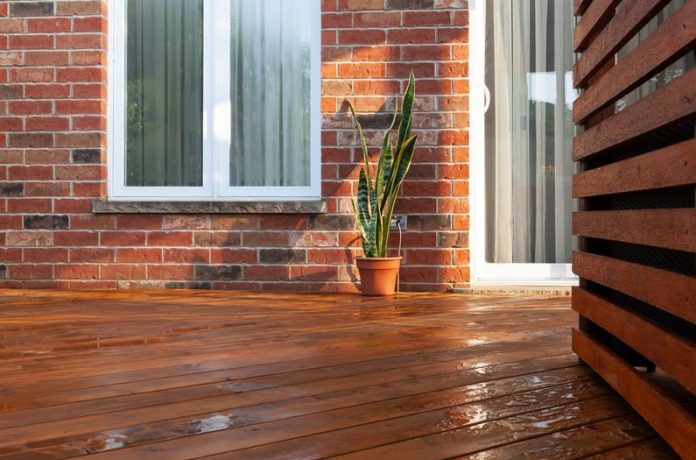Building a new deck or replacing an older one will prove to be an excellent investment, however there are certain pitfalls that a person should be aware of. Be sure to spend some time checking these before beginning construction.
Spend a little extra time in planning the layout of the deck so it will be large enough for all your planned activities. It is important that the layout blends or goes well with the surrounding area, consider the angles of the sun and shading.
Take your sketches and ideas of what you want to your local lumber dealer or favorite supplier and be sure to consider their suggestions and ideas. They can probably draw up a plan for you and give you a pretty close estimate of the materials needed and the cost.
As decks become more popular, suppliers and contractors are more familiar with the construction methods and will make sure that you choose the right type and makeup of materials.
Most decks are still being constructed with treated lumber, however, there is a new player on the scene. A new composite board that requires no sealers or painting is being used by some builders, however, it will increase the cost of materials about 80 to 100 percent. If your pocketbook allows it you might want to opt to use this new material.
Before the year 2003, the pressure-treated wood was treated with chromate copper arsenate (CCA), however, the EPA forced manufacturers to stop using this process, still allowing lumber companies and dealers to sell out their inventory of CCA products.
The problem that popped up after several years of these treated timbers being in the ground caused leaching of arsenic into the surrounding soil. There was concern that this would present a danger and health risk to children and persons who came in contact with the contaminated soil.
Today most manufacturers have changed the treatment process and are using a compound called alkaline copper quat (ACQ). Other treatment compounds are being considered for approval by the EPA, one of them being acid copper chromate (ACC). These new products are considered to be safe for such use as decks and mailbox posts.
Just because the manufacture of treated lumber using CCA was halted it doesn’t mean that you need to destroy your deck if you used that material. A good coating of a name brand oil-based sealer or paint will seal the wood and make it safe. This should be done every couple of years to be safe.
New methods of fastening the ACQ treated wood is necessary. No longer will regular metal nails of screws hold up since the copper in the material will corrode the unprotected steel fasteners. The recommended screws are poly-coated and any nails should be at least the hot-dipped nails, not the hot galvanized nails or screws. Joist hangers and connectors should be of the (TZ) type which means they are triple zinc coated with a thicker galvanized coating.
The type of flashing between the concrete pillars or foundation should be of copper or copper-coated material. Do not use aluminum flashing as it will corrode due to the copper used in the treatment of the lumber.
Because wood is a porous material and can be damaged by the UV rays of the sun it is important that you protect your deck by cleaning it with a power washer and giving it a good protective coating every two years or so. You made a large investment when you had your deck built and a little care will afford you many years of pleasure.
Railings are important on decks and can be constructed of the same treated material. There are other choices for railings such as metal and vinyl. Pre-fab spindles are now available at most material suppliers and are easy to install.
Special lighting in the area of the steps is an important factor not only to enhance the beauty of the deck but also ad security. Any steps should be well lighted for safety’s sake. Safe low voltage lighting systems are popular and the cost is well worth the benefits.
Most communities have ordinances or regulations covering decks and swimming pools and it is very important that you check with the code official in your town or community before starting construction. There are financial penalties if you do not have an official permit before any construction begins.

